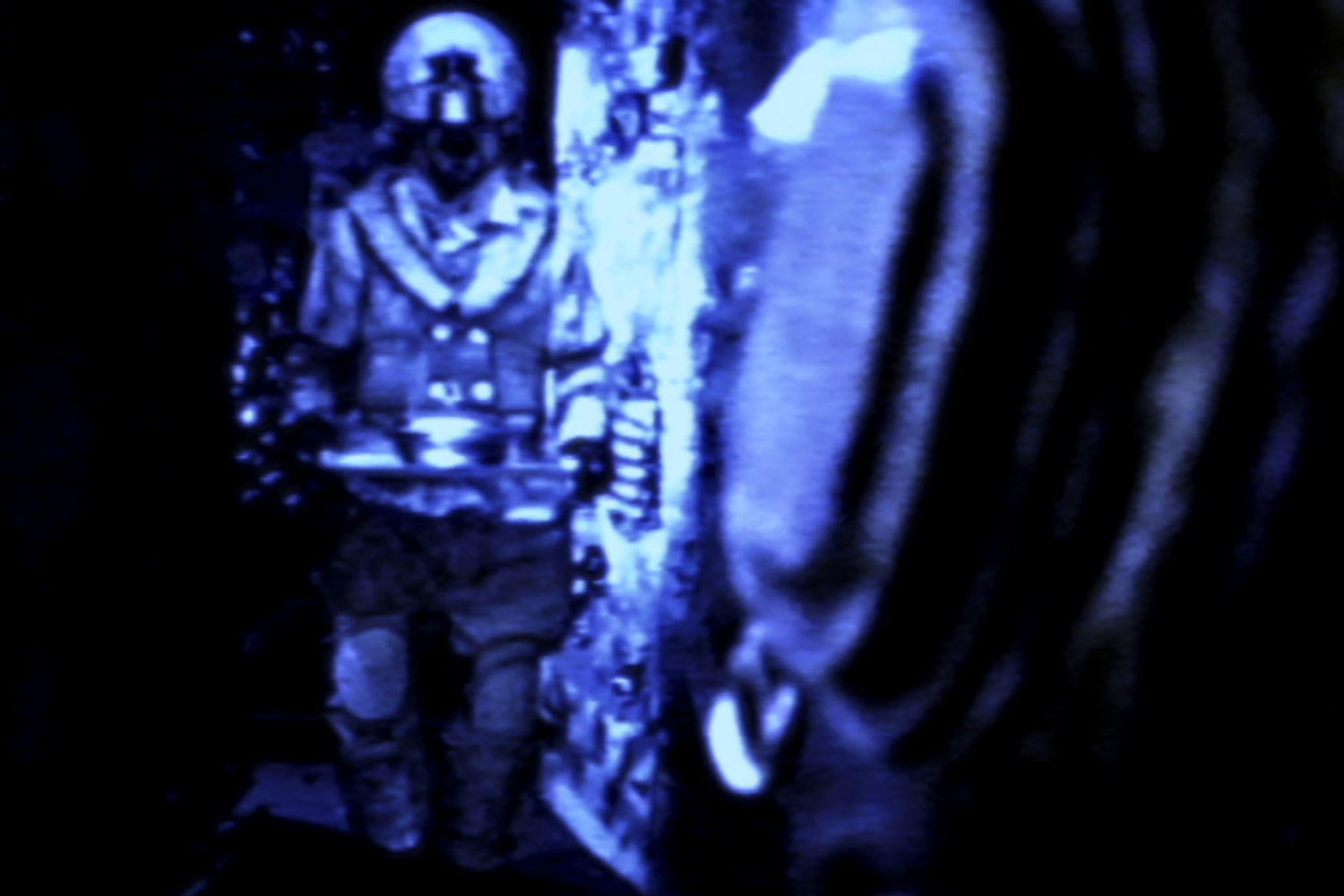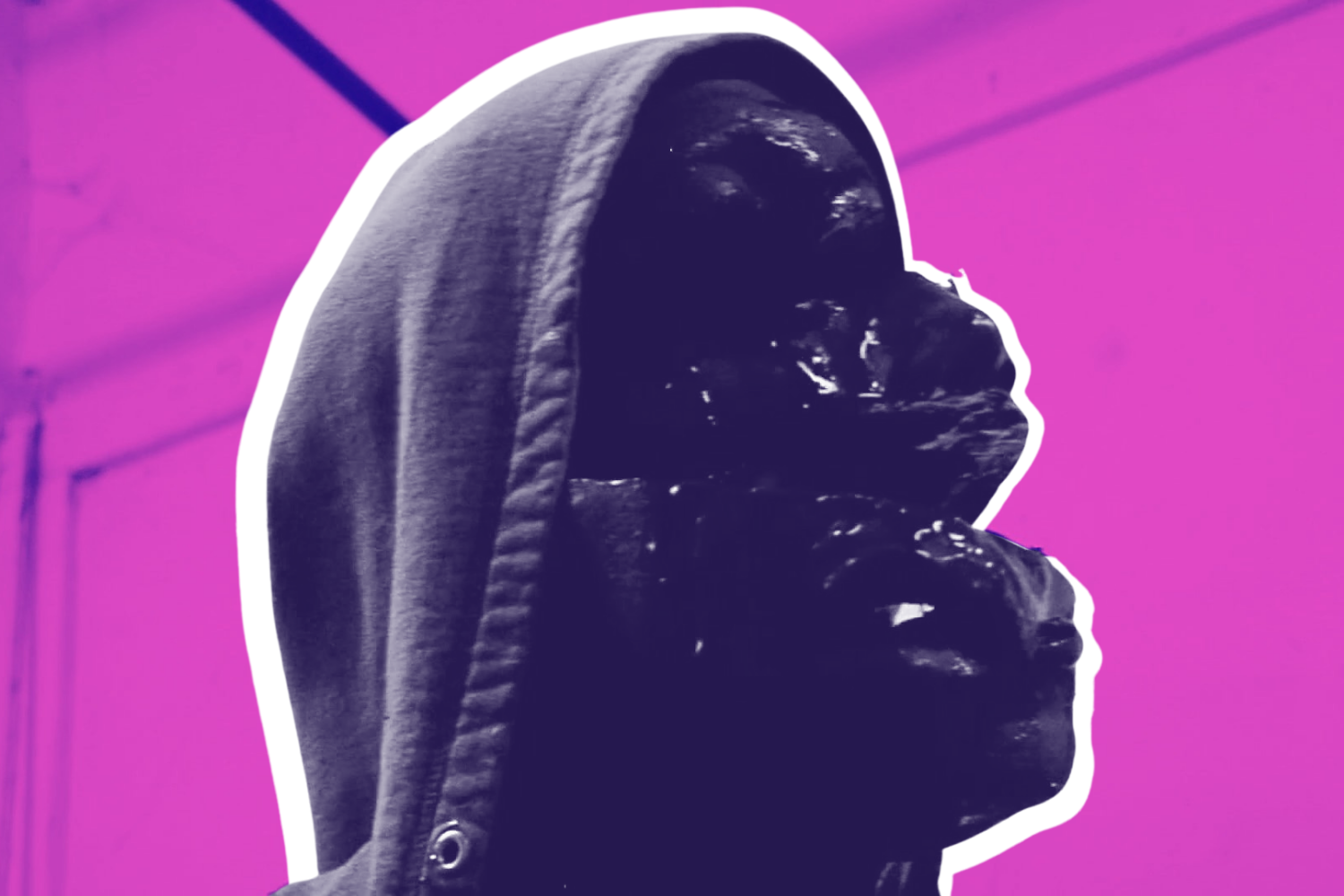Editorials
A Psychoanalytic Reading of Craig Jacobson’s ‘Elliot’
February 1st, 2022 | By John Patterson

The first time that I watched Elliot, I was taken aback. What Craig Jacobson and Cassandra Sechler—collectively known as Dreams for Dead Cats Productions—accomplish on a small budget is nothing short of awe-inspiring. The film is a neon hellscape shot entirely on old video cameras, lending the film a surreal edge. Meanwhile, the plot and production materials open doors to intense interpretation, most predominantly through a psychoanalytic reading. Using theories from Jacques Lacan and Christian Metz, we can find some fascinating themes and ideas beneath the damaged visual surface.
Lacan, Metz and Film Theory
Jacques Lacan conceived of four separate stages of development and reality. The “imaginary” occurs before a human learns words and compartmentalizes their existence between themselves and that of others. This is followed by the “mirror stage,” where a human identifies an idealized reflection of itself in the mirror. Most of the human experience occurs in the “symbolic” stage, where people use the symbols of living to learn social rules, expectations and how to act. Finally, there is the “real.” The real is strange in that it is reality without words or symbols, basically the indescribable parts of life that consists only of need. The real is generally beyond human comprehension, though its meaning is disputed.
Christian Metz took Lacan’s theories and applied them to cinema. Metz believed that the camera image was similar to the mirror stage, in that the viewer sees themselves within the film. This, Metz believed, is what causes the viewer to be so entranced by the moving picture. This is complicated by the viewer’s understanding that the film is an illusion, placing it in the realm of dreams. This creates an interesting connection between the viewer and what Metz calls the ‘cinematic signifier,’ which is the nature of our connection with the film being perceived.
The final important pieces of psychoanalytic film theory are the ideas of surrealism and the uncanny. These are frequently used to show a break in reality in film, and take away the sense of naturalism and easy connection. It is a world without rational order or explanation, similar to the idea of the real as espoused by Lacan. These create a feeling that breaks immersion for the viewer, since they can no longer take the illusion for granted and must accept the temporal and spatial whims of the filmmakers. This affects the mirror quality of the image as proposed by Metz.
Breaking the Mirror
Elliot is a low-budget film that follows the dreams, fantasies, and reality of the titular working drone. Half man and half machine, Elliot (Joshua Coffy) constantly wears a helmet that covers his eyes. He lives in a fabricated realm that seems to be both organic and metal. When not working, he plugs into a digital dream where he has a Butler (Jay Sosnicki), lives an easy life and interacts with Bianca (Cassandra Sechler). He is also portrayed as an idealized version of himself, clean and beautiful instead of filthy and strange looking. In this case, his mirror image of himself is an ideal, a view as positive as it is harmful (because it is, in fact, unattainable). This idealized mirror world causes disappointment and malaise in Elliot, forcing him to go out and find the woman he has been speaking with.
The world he actually inhabits—the symbolic—is brutal, unforgiving and regimented. He is required to respond to any request from a digitized Face (Robert Pristine Condition Gammel). He drudges through the symbolic, following orders but slowly drifting into the imaginary. After spending too much time in the imaginary world of the digital connection, it begins to clash and overlap with the symbolic world that he inhabits. This leads him to attempt to escape, trying to reach for the imaginary and flee the symbolic.
This is shown in a sequence when he seems to want to revert to a time before language. The symbolic confuses Elliot and only adds to his anxiety:
“I have a voice, but it is not my own. I have an appearance of physical existence, of which I’m unsure of and no longer interested in. I’m always something that’s already been. Somebody who is but isn’t me. I don’t know who or what I am. Or what I want. What I’m capable of having. What I do or don’t deserve. There is something inside me. I hear it all the time. But it doesn’t exist and it never has. I don’t know what I am. What I used to be or what I could be. So I choose something and I believe it as far as it will carry me. No longer, no whether, who, what, is me.”
Elliot
This shows that he is aware of his psychological predicament, and is even starting to turn against the illusion. He is seeking the pure world of the real, where only need exists with no concept of self, language or connections. It is the voice inside him that doesn’t exist. He seeks the uncanny.
The Aesthetics of the Unreal
Since the film is shot using degraded VHS tapes, the images are washed out and fuzzy, adding a surrealist layer to the visual signatures. This pushes the viewer away and makes images hard to identify, confusing the audience about the world. This aesthetic also mirrors Elliot’s mental state. Humans are in a similar state, and so we can feel his yearning and confusion even more strongly. This push and pull between immersion and alienation lends a very particular atmosphere and tone to the film. The focus on technology both within the film and through its actual filming provides an interesting parallel, both from the layered nature of the narrative’s reality and the degraded nature of the production’s equipment also leans very heavily into the ideas of harmful technological dependence. Elliot needs the escape of the dream world, but it causes him a myriad of issues. The film, conversely, uses dated equipment to create a dreamlike atmosphere of its own.
In his search, he soon finds that the woman was also seeking to escape into an idealized version of the imaginary. She lies dying and curses him for his deception. He returns home and takes his helmet off for the first time, exposing milky white eyes. This could reflect his inability to properly see due to trying to escape into the illusion instead of existing in the symbolic. In the distance, he spies a light. Upon entering, we are bombarded with flashes, images, and the outline of a massive spider-like creature. Elliot melts away to nothing, and the credits roll. This could be him entering the real, where all concepts of self and language are annihilated in an incoherent series of images and events. He is, essentially, devoured by the uncanny.
Conclusion
With their unique production and creative approach to budgetary constraint, Craig Jacobson and Cassandra Sechler have created one of the decade’s most interesting films. Elliot manages to create an atmosphere and tone that is unlike any competition, one that lends itself to thoughtful readings driven by film theory. I look forward to what the creative team produces next. Once you watch Elliot for yourself, you’ll understand why.
Visit our Editorials page for more articles like this. Ready to support more original horror criticism? Join the Certified Forgotten Patreon community today.


